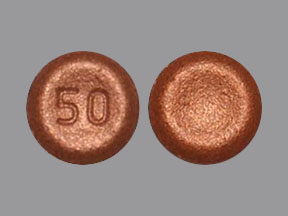Generic Xadago Availability
Last updated on Apr 10, 2025.
Xadago is a brand name of safinamide, approved by the FDA in the following formulation(s):
XADAGO (safinamide mesylate - tablet;oral)
-
Manufacturer: MDD US
Approval date: March 21, 2017
Strength(s): EQ 50MG BASE [RLD] [AB], EQ 100MG BASE [RLD] [AB]
Is there a generic version of Xadago available?
A generic version of Xadago has been approved by the FDA. However, this does not mean that the product will necessarily be commercially available - possibly because of drug patents and/or drug exclusivity. The following products are equivalent to Xadago and have been approved by the FDA:
safinamide mesylate tablet;oral
-
Manufacturer: MSN
Approval date: December 31, 2024
Strength(s): EQ 50MG BASE [AB], EQ 100MG BASE [AB] -
Manufacturer: PRINSTON INC
Approval date: April 25, 2024
Strength(s): EQ 50MG BASE [AB], EQ 100MG BASE [AB]
Note: Fraudulent online pharmacies may attempt to sell an illegal generic version of Xadago. These medications may be counterfeit and potentially unsafe. If you purchase medications online, be sure you are buying from a reputable and valid online pharmacy. Ask your health care provider for advice if you are unsure about the online purchase of any medication.
See also: Generic Drug FAQ.
Related patents
Patents are granted by the U.S. Patent and Trademark Office at any time during a drug's development and may include a wide range of claims.
-
Process for the production of 2-[4-(3- and 2-fluorobenzyloxy) benzylamino] propanamides
Patent 8,076,515
Issued: December 13, 2011
Inventor(s): Barbanti; Elena et al.
Assignee(s): Newron Pharmaceuticals S.p.A. (Bresso, IT)A process for obtaining therapeutically active 2-[4-(3- and 2-(fluorobenzyloxy)benzylamino]propanamides and their salts with pharmaceutically acceptable acids with high purity degree, in particular, with a content of dibenzyl derivatives impurities lower than 0.03%, preferably lower than 0.01% by weight. The process is carried out by submitting the Schiff bases intermediates 2-[4-(3- and 2-fluorobenzyloxy)benzylideneamino]propanamides to catalytic hydrogenation in the presence of a heterogeneous catalyst in a protic organic solvent.
Patent expiration dates:
- December 10, 2028✓✓✓
- December 10, 2028
-
Process for the production of 2-[4-(3- and 2-fluorobenzyloxy) benzylamino] propanamides
Patent 8,278,485
Issued: October 2, 2012
Inventor(s): Barbanti Elena & Caccia Carla & Salvati Patricia & Velardi Francesco & Ruffilli Tiziano & Bogogna Luigi
Assignee(s): Newron Pharmaceuticals S.p.A.A process for obtaining therapeutically active 2-[4-(3- and 2-(fluorobenzyloxy)benzylamino]propanamides and their salts with pharmaceutically acceptable acids with high purity degree, in particular, with a content of dibenzyl derivatives impurities lower than 0.03%, preferably lower than 0.01% by weight.
Patent expiration dates:
- June 8, 2027✓✓
- June 8, 2027
-
Methods for treatment of parkinson's disease
Patent 8,283,380
Issued: October 9, 2012
Inventor(s): Fariello Ruggero & Cattaneo Carlo & Salvati Patricia & Benatti Luca
Assignee(s): Newron Pharmaceuticals S.p.A.New uses of safinamide, safinamide derivatives and MAO-B inhibitors in novel types of treatment for Parkinson's Disease are described. More specifically, the invention relates to methods for treating Parkinson's Disease through the administration of safinamide, a safinamide derivative, or a MAO-B inhibitor, in combination with other Parkinson's Disease agents or treatments, such as levodopa/PDI or dopamine agonists.
Patent expiration dates:
- March 21, 2031✓
- March 21, 2031
More about Xadago (safinamide)
- Check interactions
- Compare alternatives
- Pricing & coupons
- Reviews (4)
- Drug images
- Side effects
- Dosage information
- During pregnancy
- FDA approval history
- Drug class: dopaminergic antiparkinsonism agents
- Breastfeeding
- En español
Patient resources
Professional resources
Related treatment guides
Glossary
| Term | Definition |
|---|---|
| Drug Patent | A drug patent is assigned by the U.S. Patent and Trademark Office and assigns exclusive legal right to the patent holder to protect the proprietary chemical formulation. The patent assigns exclusive legal right to the inventor or patent holder, and may include entities such as the drug brand name, trademark, product dosage form, ingredient formulation, or manufacturing process A patent usually expires 20 years from the date of filing, but can be variable based on many factors, including development of new formulations of the original chemical, and patent infringement litigation. |
| Drug Exclusivity | Exclusivity is the sole marketing rights granted by the FDA to a manufacturer upon the approval of a drug and may run simultaneously with a patent. Exclusivity periods can run from 180 days to seven years depending upon the circumstance of the exclusivity grant. |
| RLD | A Reference Listed Drug (RLD) is an approved drug product to which new generic versions are compared to show that they are bioequivalent. A drug company seeking approval to market a generic equivalent must refer to the Reference Listed Drug in its Abbreviated New Drug Application (ANDA). By designating a single reference listed drug as the standard to which all generic versions must be shown to be bioequivalent, FDA hopes to avoid possible significant variations among generic drugs and their brand name counterpart. |
| AB | Products meeting necessary bioequivalence requirements. Multisource drug products listed under the same heading (e.g. identical active ingredients, dosage form, and routes of administration) and having the same strength (see Therapeutic Equivalence-Related Terms, Pharmaceutical Equivalents) generally will be coded AB if a study is submitted demonstrating bioequivalence. In certain instances, a number is added to the end of the AB code to make a three character code (e.g. AB1, AB2, AB7). Three-character codes are assigned only in situations when more than one reference listed drug of the same strength has been designated under the same heading. Two or more reference listed drugs are generally selected only when there are at least two potential reference drug products which are not bioequivalent to each other. If a study is submitted that demonstrates bioequivalence to a specific listed drug product, the generic product will be given the same three-character code as the reference listed drug it was compared against. |
Further information
Always consult your healthcare provider to ensure the information displayed on this page applies to your personal circumstances.

